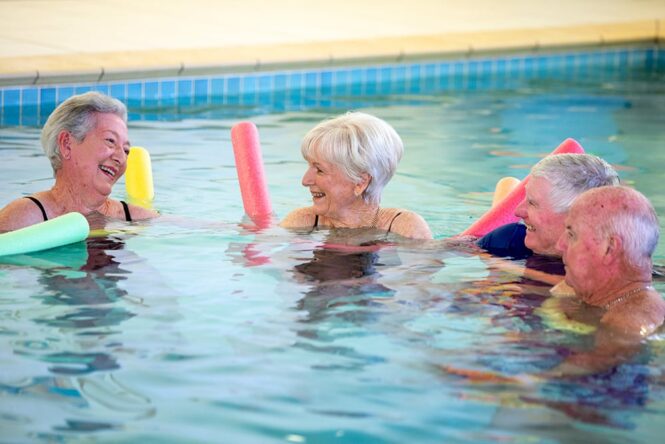There is a lot for older adults to consider when they switch to retirement.
The choices are endless, from deciding how to manage their finances to whether they’ll eventually move to a retirement home. For more information about retirement homes, click here.
With so many choices to make, staying organized can prove challenging. However, with concise planning, older adults can seamlessly set up their new lifestyles.
Below, we’ll go over a few tips for planning your move into retirement that will prove helpful before and after making the switch, so keep reading to learn more.
1. Establish a Solid Social Circle

Many older adults who move into retirement living can begin to feel isolated after a time if they don’t regularly visit with their friends and family, which is typical for individuals who are retiring far away from their loved ones or whose families have hectic lives.
Therefore, those planning their retirement should move to a location where they have friends or loved ones close by or simply retire in the town where they currently live.
Having a circle of friends nearby will help older adults maintain the sense of belonging that is often lost after an individual leaves the working world.
2. Make a Financial Plan
One of the most critical steps in retirement planning is to ensure older ones have their finances in order. Many adults will begin saving for retirement early on in their working life and often receive a pension plan from their employer.
Adults who don’t have a vast savings account can consult a financial advisor to get a better handle on how much they can spend and set aside.
Having a set financial plan allows older adults to relax and enjoy their newfound freedom, whether they decide to live in a retirement home or age in place.
3. Stay Physically Active

Physical fitness is essential at every stage of life, but for older adults, maintaining a physically active lifestyle is vital to help them maintain their health and age gracefully.
Therefore, older adults who are currently planning their retirement can better ensure their physical health in the future by beginning a more active lifestyle now.
There are many different exercises and activities adults can take part in that cater to their physical capabilities, from low-impact exercises like yoga and light-weight training to more intense workouts like dancing and HIIT.
A doctor or healthcare professional should always be consulted before beginning a new exercise regimen.
4. Create a Daily Routine
Once older adults have moved into retirement, having a consistent daily routine can help them better acclimate to their newfound lifestyle.
Older adults can do many things to improve their daily lives, such as waking up and going to bed at the same time every day.
Adding other daily practices to their life, such as keeping a journal, phoning loved ones who live far away, taking a walk, and other similar things, can help older adults improve their mood and give them a better sense of purpose.
5. Keep a Gratitude Journal

As touched on above, keeping a journal is an excellent habit for older adults to adopt both before and after they move into retirement. Specifically, writing a gratitude journal can help reinforce positive thinking and act as a mood booster.
Regularly writing about what a person feels grateful for will make them more inclined to focus on what they have instead of what they don’t.
Older adults who miss their working life may begin to feel less valuable to society, but by focusing on the good things in their lives, these feelings will start to lessen.
6. Make a Plan for Long-Term Goals
One of the aspects of retired life that many older adults look forward to most is having the time and freedom to pursue long-term personal goals. While they may have taken small steps to attain their goals in their working life, they may be able to reach them with their newfound free time fully.
Therefore, those planning their retirement should make a separate plan for the goals they wish to reach once they finish working secularly. These goals include taking college courses, saving for a round-the-world trip, or learning a new language.
Planning out such goals will help older adults entering retirement maintain daily objectives and stay busy, which will help them continue to feel productive.
7. Try New Things

Some older adults who move into retirement can lose their passion for the day-to-day, as their daily routine may start to feel stale, leading to many issues, from self-isolation to depression and anxiety.
Therefore, an excellent way for older adults to maintain a positive outlook and curiosity for life is to try new things they’ve never done before, such as taking up a new hobby or learning a skill.
Taking a chance on something new can help to add variety to an older person’s life, which can help prevent them from feeling bored and dissatisfied. Further, by planning which things they would like to try, older adults can enter retired life with a full roster of activities to keep them busy and negative feelings at bay.
Final Thoughts
A solid retirement plan greatly benefits older adults anxious about the prospect. The idea of retiring is challenging for many adults who enjoy having a full schedule and routine, and many worry about having enough in their savings and pension to live on.
However, taking steps to ensure that finances are in order, they have finalized housing, and they have enough activities and goals lined up to fill their time will help older adults approach retirement living in a more positive light and ease common anxieties.
If your loved one is moving into retirement, you can ease their mind by helping them form a solid plan for their new life. Go over their finances together or consult a financial advisor for further assistance, and help them develop some exciting new goals and hobbies to add to their daily routine.
 Imagup General Magazine 2024
Imagup General Magazine 2024



